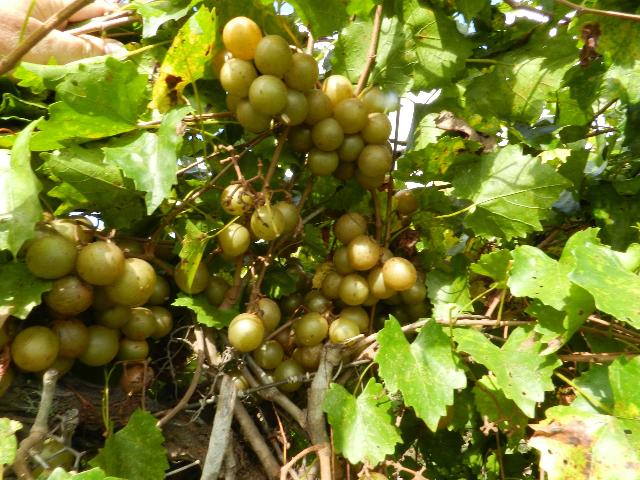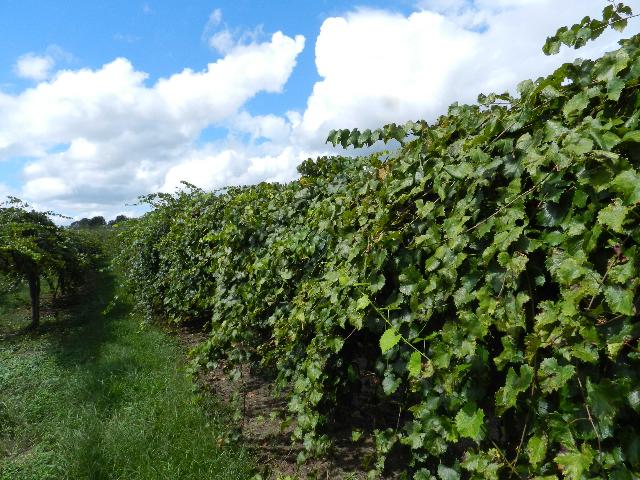Mother always said “never be late,” but in the case of certain muscadine (Vitis rotundifolia) cultivars, it’s good to be late. Although muscadine harvest can begin as early as July, growers with late bearing muscadines are just completing fruit harvest. Generally, muscadines do not store well or last long after harvest, so growers have the option of planting early, mid or late season muscadines to maximize the availability of fresh product. Therefore, mixing early and late bearing muscadine plants in a given production area can extend production into early October in Northwest Florida.
Northwest Florida growers grow muscadines as a substitute for traditional grape (Vitis vinifera) cultivars such as ‘Concord’ or ‘Thompson’s Seedless’, since these cultivars are prone to Pierce’s Disease. In fact, muscadines are native to the Southeastern US, and are resistant to a variety of insect and disease pests. This is a significant advantage, because the need for insecticides or pesticides in production can be lower than many other fruit crops.
An additional advantage of growing muscadines is that they can easily be asexually propagated. To mimic the natural asexual propagation of wild muscadines, growers may use the pegging method to duplicate non-patented or varieties in which patent has expired (20 years from introduction). Pegging entails wounding the branch in several locations, then burying the wounded section of the branch in moist soil while leaving the shoot tip exposed. If this is done in the late spring or summer, roots should form from the main branch in about a month. After roots are confirmed, the connection with the mother plant can be cut.
Planting time for muscadines depends on the type of plant purchased. Bare root vines should be planted between December and January, but containerized plants can be planted any time.
Before muscadines are planted, soil tests should be performed to determine pH. Muscadines can be grown in the pH range of 5.5 to 7.0, with the optimal level between 6.0-6.5. Since many soils in northwest Florida are highly acidic, tests should be done at least 3 months before planting. This will allow the addition of an optimal lime source, Dolomite, which takes 3 months to raise the pH but also adds magnesium to the soil.
[warning]Major pruning should not be done in the fall, since pruning stimulates growth. As such, an early cold snap could damage tender young growth brought on by fall pruning. Major pruning should be done in late January through early February, since vines will have acclimated to winter temperatures by this time and will be less prone to growth spurts. [/warning]
Here is a list of recommended later bearing cultivars:
Mid to Late
- Big Red – Black
- Farrer – Black
- Nesbitt – Black
- Supreme – Black
- Pineapple – Bronze
- Delight – Bronze
Late
- Polyanna – Black
- Doreen – Bronze
- Granny Val – Bronze
Very Late
- Late Fry – Bronze
To learn more about pruning and different training techniques, please consult:
The Muscadine Grape, Publication #HS763
- Steps to Remedy Non-Productive Pecan Orchards - June 30, 2023
- If Not Disease, Then What? Abiotic Vegetable Disorders - June 24, 2022
- Dormant Sprays Protect Fruit Trees from Future Insects and Diseases - January 28, 2022


